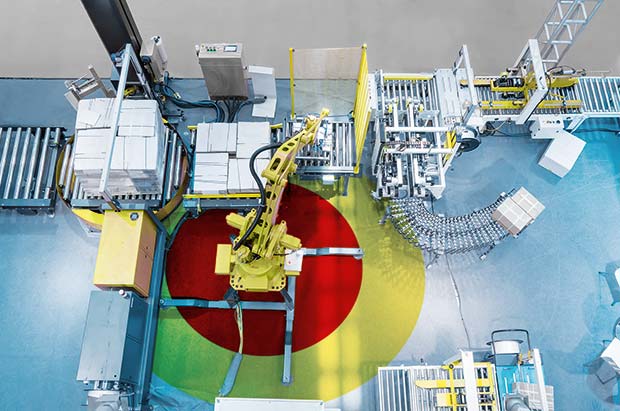Automation is on the march, and the warehousing and logistics sector is one that is increasingly adopting automated systems due to a number of factors. These include the many repetitive functions that are suited to the deployment of robots, cobots or machines, potential labour shortages and health and safety restrictions for the manual workforce. But even taking into account the McKinsey estimate that 57% of functions in this sector will eventually be automated, humans will still play an important role when it comes to ensuring that goods and products can be moved, stored and distributed to the customer.
 Automatic Guided Vehicles (AGVs) and Autonomous Mobile Robots (AMRs) will not totally eclipse the use of forklifts or actual people: the former are typically restricted to certain pre-defined routes and therefore lack the flexibility offered by driver-operated forklifts whereas the latter are designed to work alongside humans. The warehouse will continue to be populated by a pre-programmed as well as a living breathing workforce, so ensuring the safe operation of this combination will become more complex.
Automatic Guided Vehicles (AGVs) and Autonomous Mobile Robots (AMRs) will not totally eclipse the use of forklifts or actual people: the former are typically restricted to certain pre-defined routes and therefore lack the flexibility offered by driver-operated forklifts whereas the latter are designed to work alongside humans. The warehouse will continue to be populated by a pre-programmed as well as a living breathing workforce, so ensuring the safe operation of this combination will become more complex.
It has long been acknowledged that, as with road traffic accidents, human error is responsible for the majority of, mainly preventable, mishaps in the warehouse. Training and physical measures such as barriers and signage can alert people to danger, but hazardous areas and accident blackspots may not be immediately apparent to them nor to automated equipment. A more holistic safety approach is therefore required, best tackled with the latest technology.
Let’s take the scenario of a warehouse where Mr. A is replenishing stock in one corner of the warehouse, cobot B is putting products into containers, AGV C is moving goods in a transfer aisle and forklift driver D is bringing offloaded goods to racking. They are all in their own workspaces but in proximity to each other so the risk of an accident or collision is relatively high, particularly when you factor in the speed at which forklifts can travel.
By creating individually configurable warning or protections zones around A,B,C and D with the UWB, radio-based technology used in ELOKON’s ELOshield proximity detection system, each is working in its own safety “buffer zone” for protection from the other. Their movements are monitored in real time by vehicle modules, antennas and personal modules which are in constant communication. These trigger acoustic, visual or vibration warnings within milliseconds of detecting potential danger, such as when a cobot and AGV are too close for comfort. A vehicle can also be automatically braked if a person or other vehicle encroaches its danger zone.
The system can also create defined zones to secure specific fixed areas such as aisle entrances, doorways or around production lines. It can intervene to automatically slow down vehicle speeds to those deemed suitable for these areas such as 5km/h or 2.5km/h depending on the level of risk.
Warehouses may be becoming smarter, but this mix of automation and humans requires ever cleverer solutions to ensure safe interaction. ELOKON’s safety and assistance systems harness the power of technology to reduce the risk of accidents and safeguard the warehouse, the workforce and equipment.
Elokon




Comments are closed.